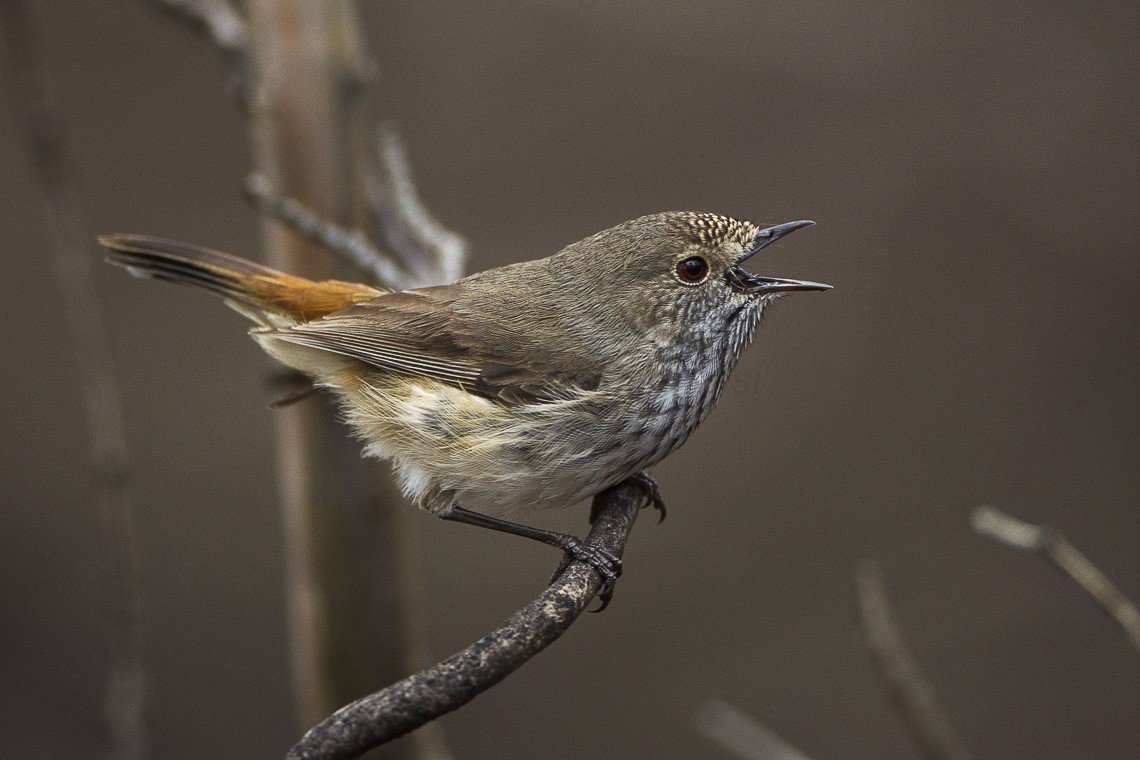Inland Thornbill
A species of Thornbill Scientific name : Acanthiza apicalis Genus : Thornbill
Inland Thornbill, A species of Thornbill
Botanical name: Acanthiza apicalis
Genus: Thornbill
Content
Description General Info
 Photo By Francesco Veronesi , used under CC-BY-SA-2.0 /Cropped and compressed from original
Photo By Francesco Veronesi , used under CC-BY-SA-2.0 /Cropped and compressed from original Description
The inland thornbill (Acanthiza apicalis), called the broad-tailed thornbill, is a small, insect-eating bird of Australia. The inland thornbill is commonly confused with the coastal brown thornbill (Acanthiza pusilla) due to its similar colorations. The inland thornbill encompasses four subspecies: Acanthiza apicalis albiventris Acanthiza apicalis apicalis, the nominate subsp. Acanthiza apicalis cinerascens Acanthiza apicalis whitlocki, Whitlock's tit. Originally described as a species of Acanthiza by A. J. North, who was requested to honour the collector of its specimens, F. Lawson Whitlock, by the sponsor of the expedition, H. L. White. The inland thornbill ranges in size from 9 to 11 centimetres, averaging 10 centimetres and 7 grams. The bird has a grey-brown back, a reddish rump, and a dark tail with a white tip. Its underbelly is cream colored with black streaks. Both male and female thornbills look similar, though male birds tend to be a bit larger. Breeding season lasts from July through December. Female thornbills average three eggs per clutch, which incubate for 19 days. Baby birds leave the nest after 17 days. The inland thornbill can be found throughout Australia inland of the Great Dividing Range, but not in tropical northern climates or in Tasmania. The inland thornbill overlaps in range with the brown thornbill along the Great Dividing Range, leading to numerous mis-sightings. Inland thornbills live in dry scrublands and woodlands. In Southwestern Australia, they also inhabit sand heaths and karri and jarrah forests. It feeds on small insects and spiders, and occasionally seeds and small vegetable matter, beneath shrubs and in foliage. 
Size
12 cm
Nest Placement
Shrub
Feeding Habits
Inland Thornbill mainly consumes insects like spiders, beetles, bugs, ants, caterpillars, wasps, and other arthropods, occasionally including seeds in their diet. Typically forages in pairs or family groups, using a variety of techniques such as gleaning, sallying, and hover-gleaning on shrubs and trees throughout the day. Inland Thornbill uniquely joins mixed-species flocks for feeding.
Habitat
The habitat of inland Thornbill encompasses dry woodlands and sclerophyll forests characterized by diverse and dense undergrowth. These regions are often populated with various flora such as grass-trees, banksia, and sheoaks. Inland Thornbill also resides in wet sclerophyll and mallee woodlands, as well as heath and woodlands of banksia and casuarinas, preferring areas with a rich shrub layer. Its presence is notable in arid and semi-arid zones, yet it avoids extreme deserts.
Dite type
Insectivorous
General Info
Feeding Habits
Bird food type
Species Status
Not globally threatened.
Scientific Classification
Phylum
Chordates Class
Birds Order
Perching birds Family
Australasian warblers Genus
Thornbill Species
Inland Thornbill